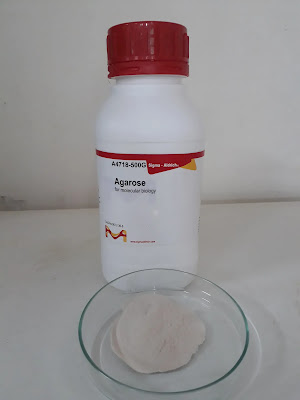Contents
hide
Product & Company Identification
- Get the Results You Need – Read – Agarose SDS!
- Product Name: Agarose.
- Manufacturer: Sigma-Aldrich.
- CAS Number: 9012-36-6.
- Component Name: Agarose, low EEO.
- Formula: C12H<>18O9)n.
- Formula Weight: ~120,000.
- Synonyms: Agar (Refined).
Composition/Information on Ingredients
- Agarose, a linear polymer, contains the repeating substances D-galactose & 3,6-anhydrous-L-galactopyranose. It is derived from seaweed & is often used as a gel electrophoresis substrate in molecular biology.
Hazards Identification
- The Globally Harmonized System of Classification & Labeling of Chemicals’ criteria states that agarose is not a hazardous chemical (GHS). To prevent inhalation or ingestion, it should be handled carefully. Flush with lots of water if it comes in touch with your eyes or skin.
First Aid Measures
- If inhaled: If your symptoms don’t go away, get some fresh air & call your doctor.
- If in eyes: Eyes should be thoroughly rinsed with water for at least 15 minutes. If symptoms continue, seek medical attention.
- If on the skin: Wash well with soap & water.
- If ingested: Immediately seek medical help.
Fire-Fighting Measures
- Agarose is not combustible or flammable. However, to put out a fire, use carbon dioxide, foam, dry chemicals, or water spray.
Accidental Release Measures
- Spills should be cleaned up with absorbent material (such as sawdust or sand) & disposed of in a closed container. Use soap & water to clean the area.
Handling & Storage
- Store in a cool, dry place. Keep the container tightly closed. Avoid inhalation or ingestion. Use with adequate ventilation.
Exposure Controls/Personal Protection
- Steer clear of the skin or eye contact. When handling, put on the proper safety gear, such as gloves & goggles.
- Wash hands after handling.
Physical & Chemical Properties
- Appearance: white to off-white (powder).
- Solubility: Soluble in water ( creates a gel with boiled water).
- pH: 6.5-7.5.
- Melting point: <90 °c>.
- Specific Gravity: 1.0.
- Biological Use: used to create electrophoresis gels. typically between 0.8 & 2% agarose.
Stability & Reactivity
- Stable when handled & stored according to standard procedures. Keep your distance from strong acids & bases.
- Good shelf life if properly stored.
Toxicological Information
- The substance agarose is not regarded as hazardous. However, ingesting or inhaling a lot of it could be uncomfortable.
Ecological Information
- The environment is not thought to be harmed by agarose.
Disposal Considerations
- Follow all applicable federal, state, & local rules before disposing of the stuff.
Transport Information
- Not regarded to be a transportable hazardous material.
Regulatory Information
- According to the OSHA-Hazard Communication Standard, agarose is not a hazardous substance.

Conclusion
In molecular biology, agarose is a popular polysaccharide for gel electrophoresis. Although it is not regarded as dangerous, it should be handled carefully to prevent inhalation or ingestion. Flush with lots of water if it comes in touch with your eyes or skin. Agarose can be handled and stored normally, however, it shouldn’t be exposed to strong acids or bases. It does not harm the environment significantly and is not hazardous. It needs to be disposed of in conformity with all applicable state, local, & federal laws. Always read and follow Agarose SDS!
